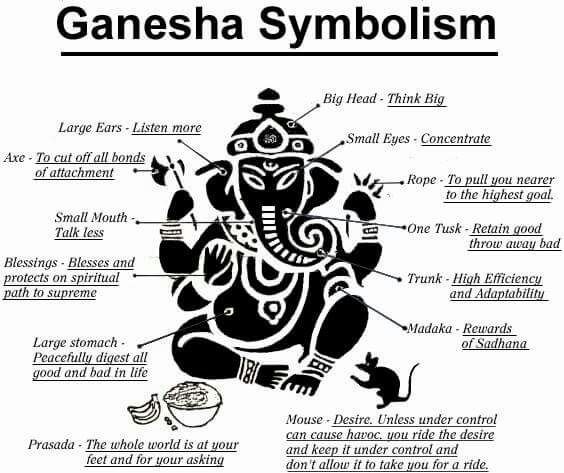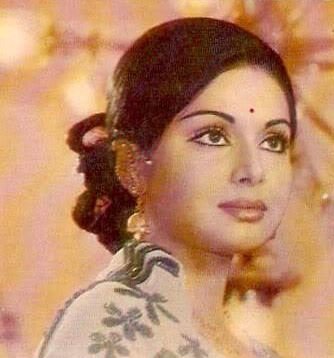"14 Secrets Of Ganesh " , Hidden In Plain Sight
Lord Ganesha is always depicted in a state of peace and harmony....
lord Ganesha is also a source of learning.
Every body part of Ganesha’s body teaches us something and has a deep spiritual significance.
1.Eyes
Ganesha’s small eyes symbolize concentration.
Ganesha’s eyes teach us to concentrate our mind, as only a person who has controlled his mind can achieve any success in life.
2.Head

Ganesha’s big head means ‘think big!’
No wonder Lord Ganesha is worshiped as the god of wisdom.
His elephant head indicates intelligence and discrimination.
3.Ears
Ganesha’s Big Ears mean ‘listen more’.
Ganesha’s wide ears denote the ability to listen to people who seek his help.
Ears are also used to gain knowledge.
They signify the importance of listening in order to absorb ideas.
4.Mouth
Ganesha’s Small Mouth means ‘talk less’.
His mouth teaches us to believe in doing instead of talking.
To value our words.
To listen, think, do- and then talk.
5.Legs
Social and spiritual are both important phases in life.
The position of his legs (one resting on the ground and one raised) indicate a way of living.
It’s important to live in the social as well as in the spiritual world.
6.Big Belly
Digest all good and bad in life, and you will attain the virtue of calmness.
Ganesha’s belly contains infinite universes; this signifies the ability of Ganesha to swallow the sorrows of the universe and protect the world.
7.Blessing Hand
The third hand, turned towards the devotee, is in a pose of blessing.
Ganesha offers protection and guidance to the spiritual seeker.
We must also offer that same grace and blessings to those we meet on the path of life.
8.Four Arms
The four arms of Ganesha represent the four inner attributes of the subtle body,
That is: Manas (mind), Buddhi (intellect), Ahamkara (ego) and Chitta (conditioned conscience).
9.Broken Tusk
Ganesha’s Single Tusk (the other one being broken) indicates Ganesha’s ability to overcome all forms of dualism.
The broken tusk teaches us to analyze experiences in life, to retain the good and to throw out the bad.
It teaches us to introspect– to keep good thoughts and good habits, and to throw out evil thoughts and bad habits.
10.Mark on the Forehead
Ganesha’s Urdha mark signifies being a Master of Time.
On Ganesha’s forehead is located the Trishul (weapon of Shiva), symbolizing Time (past, present, and future) and Ganesha’s mastery over it.
Hence the mark means Active Energy.
11.Axe
It represents severing of bonds and attachments.
The hand waving an axe is a symbol of the detachment of all desires, bearers of pain and suffering.
With this axe, Ganesha can both strike and repel obstacles.
12.Rope
The second-hand holds a rope and a lotus flower.
The lotus flower (Padma) symbolizes the highest goal of human evolution.
The rope is to pull the devotee to the highest goal.
13.Sweets
The fourth hand holds a modaka (sweet), which symbolizes the sweetness of the realized inner self.
It also denotes the reward of sadhana (devotion).
14.Mouse
The mouse symbolizes logic and doubt.
Lord Ganesha is depicted sitting over a mouse, indicating that he has control over his logic and doubt.
A strategic leader must not let logic have a free rein.
It should be practiced with caution and within limits.
Very informative....Thanks for writing such a wonderful article
Thanks for sharing such a knowledgeable article. It has been well portrayed in a distinctive manner......
All the best to your first article.
Good information bro
Posted using Partiko Android
BUITIFULY WRITTEN. GOOD CONTENT.KEEP IT UP.
Please do visit my thread too..ORIGINAL BUITY https://steemit.com/actress/@munia352/rakhee-gulzar